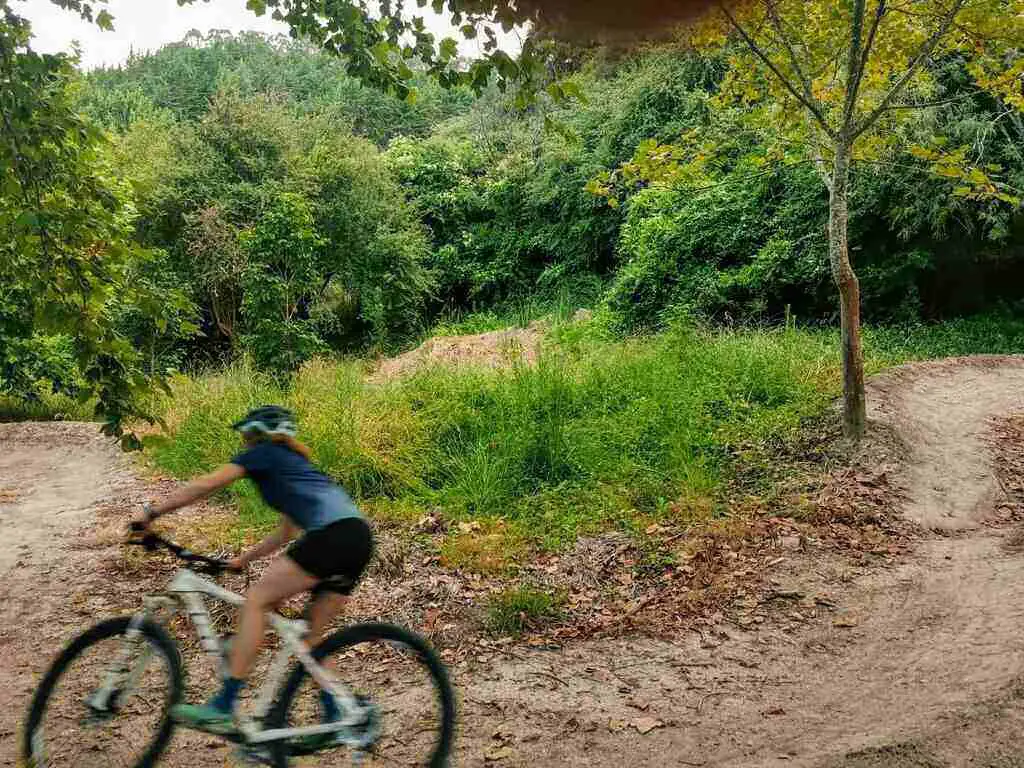Being well protected is such a big aspect of mountain biking, including eye protection. This discussion will look into whether you need goggles for mountain biking or not.
There are two reasons you need to protect your eyes while shredding the trails.
- Stop dirt/ rain/ dust/ sun from getting your eyes
- If you can see the track, you are less likely to crash!
I never used to wear eyewear while mountain biking. This is for two reasons really. The first being the tracks I used to ride didn’t really get all that dusty, and I never rode in the rain! The second being that I spent a lot longer riding uphill than descending, so figured it wasn’t worth my time.
Now a days I find that goggles and glasses are pretty handing for the kind of riding I do.
We will look into when you need goggle and when you don’t.
Why wear goggles while mountain biking?
Mountain Bikers wear goggles for a few reasons;
- Stops dirt/mud/bugs/rain/branches/dust/stones getting in your eye
- Some goggles offer sun protection (blocks harmful UV rays)
The advantage of goggles over glasses is that they fully cover the eyes, and they are strapped on. This obviously stops the mud flicking up under the glasses, and prevents the glasses from coming off, getting flicked off by branches or moving around.
You are better off wearing goggles when you are riding dusty or muddy trails. Steep, fast and technical sections, where there are high consequences of coming off, goggles are essential.
It is particularly important when riding behind another rider, as have someone in front tends to pick up a bit of dust.
You could imagine coming into a tight steep corner and getting a bit of mud or dust in your eye, preventing you from seeing the obstacles ahead. This causes you to misjudge a turn, or not see a rock and you come off. Or you have to stop and get the mud out of your eye. Either way, pretty annoying and can be avoided easily by wearing glasses.
Wearing goggles can help you hugely in these situations!
When do you not need to wear goggles?
Uphill. Sealed roads. Non-technical areas. Slow trails.
Pretty much if there isn’t a hazard of dust, mud, stones etc getting into your eyes, then goggles aren’t really needed.
I also wouldn’t usually wear them in the rain. Rain drops on the goggles makes it very hard to see. Like a car windscreen when driving in the wet- but without windscreen wipers!
Cheaper goggles also tend to fog up in the rain which isn’t helpful!
Can I wear goggles with a full-face helmet?
Yes, definitely. Goggles are most often worn with full face helmets as the type of terrain riders with full face helmet tend to ride is generally steep or technical.
Some riders find that the goggles actually help keep the helmet in place too. This is because many full-face helmets don’t tighten, they use padding to get the right size. Having goggles tends to stop the helmet moving around, which is pretty handy.
How to wear goggles mountain biking?
The strap stretches over the back of the helmet, and rests on your face (at eye height).
Some helmets with adjustable visors allow you to store goggles beneath the visor when you don’t need the goggles. Additionally, some helmets have goggle grippers at the back of the helmet which help stop the strap sliding off the helmet. An example of this is the Giro Montaro- you can see the review here.
Final Remarks
Pretty much you need the googles when the terrain calls for it. Keep in mind though that a trail that may be fine when riding on your own, but when following behind another rider, you may require goggles.
